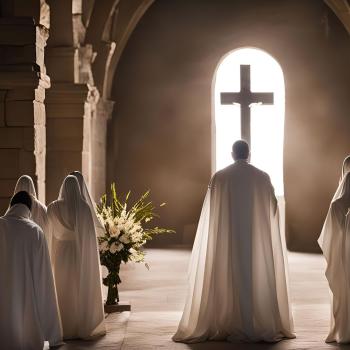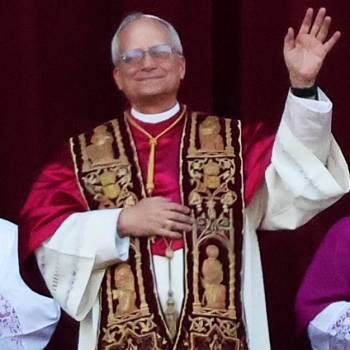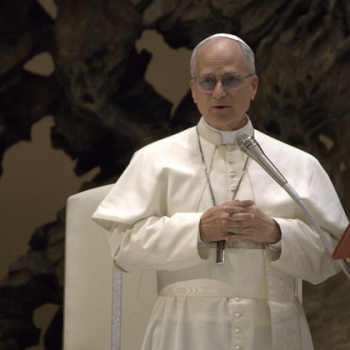I have to tell you, I was already sick of hearing Michael Jackson referred to, endlessly, by the pop-culture-infatuated press as “an Icon!”
Now, the White House is doing it, too.
At today’s White House briefing, White House press secretary Robert Gibbs said he and President Obama talked this morning about Michael Jackson’s death.
“He said to me that obviously Michael Jackson was a spectacular performer and a music icon and I think everybody remembers hearing his songs and watching him moonwalk on television during Motown’s 25th anniversary,” Gibbs said.
“But the president also said, look, he had aspects of his life that were sad and tragic,” Gibbs continued.
That Jackson’s life had its sad and tragic aspects is undeniable, but this media-sanctification is really going too far. As Jonah Goldberg writes:
…let’s pause for a moment on that word “icon.” It seemed the consensus adjective for the news networks. NBC ran a special on two “American Icons” — Fawcett and Jackson. Every cable network (including Fox, for the record) used the word “icon” to describe him as if this was some sort of safe harbor, a word everyone could agree on. “Love him or hate him,” the implied logic went, “he was an ‘icon.’”
Yes, well, maybe so. But that doesn’t let you off the hook. Even though the term sounds neutral, it isn’t. An icon, technically speaking, is a religious symbol deserving of reverence and adoration. The networks may not have intended to use the word that way, but they certainly showed an unseemly amount of reverence and adoration for the man.
Spot-on. I urge you to read Goldberg’s whole piece, because his smart, quickly tossed off remarks will get you wondering at the dumbing-down of America, and how our overpraised children and our over-idoled unto-mediocrity culture has become unable to make distinctions between holiness and hype, between measured responses to situations, versus over-emotive sensationalism meant to appeal to our schmaltziest instincts.
Coverage of the death of Michael Jackson has reduced big-time-professional journalism to purveyors of “very special episodes” of the After-School-After-America Special.
If we remember our Moses and our Golden Calf, we know that human beings have always created idols. Once upon a time, though, we at least understood that these godlings were wholly created from our own need to adore something and endow it with qualities of transcendence, and we were smart enough to be a little embarrassed about fainting for Sinatra, or screaming for John, Paul, George and Ringo. We understood that such cultural moments were mostly silliness, and considered that idol-making was a rare and harmless pastime.
It’s not so rare, anymore, or harmless. As our post-modern society becomes increasingly post-faith, we watch our instincts to raise up idols more frequently indulged. Is there a nation that does not have one (or more) “Idol-creating” type television show at the top of the ratings pile? We narcissists live vicarious dreams as we construct these godlings, carry them about on chairs of never-ending affirmation (when was the last time you expect Michael Jackson (or President Obama) heard the word “no”?) then we watch them crumble under the weight of material excess and broken illusions.
And we resurrect them when they die, and place them in our tin-ceilinged firmaments. And we forget that they were ever idols. We call them Icons.
Let me supply a quick primer – for the press and the general public – about the difference between an idol and an Icon.
An Icon looks out from an Intrinsic light and points to its Source; there are no shadows in which to hide
An idol looks out from man-created light, and points to no one but himself; then walks into the shadows
An Icon looks you straight in the eyes and dares you to pursue truth.
An idol wears shades and has his spokesperson tell you what you want to hear.
An Icon teaches you how to focus, how to quiet down, focus, collect oneself and hear the small, still voice.
An idol teaches throws noise, images and issues at you, non-stop, scatters your thinking and deafens you to any voice but his.An Icon whispers wisdom.
An idol shouts sound-bites and mindless trendspeak.
An Icon inspires you to chant to the Most High.
An idol inspires you to chant to him.
Currently, my favorite Icon is this gorgeous image, from The Holy Transfiguration Monastery. It is called “Lord, Save Me,” and it is much richer, and more beautiful, when viewed in person. The screen does not quite do it justice:

Matthew 14:25-31:
During the fourth watch of the night, 8 he came toward them, walking on the sea. When the disciples saw him walking on the sea they were terrified. “It is a ghost,” they said, and they cried out in fear. At once (Jesus) spoke to them, “Take courage, it is I; 9 do not be afraid.” Peter said to him in reply, “Lord, if it is you, command me to come to you on the water.” He said, “Come.”
Peter got out of the boat and began to walk on the water toward Jesus. But when he saw how (strong) the wind was he became frightened; and, beginning to sink, he cried out, “Lord, save me!” Immediately Jesus stretched out his hand and caught him, and said to him, “O you of little faith, 10 why did you doubt?”
As long as he kept his eyes on Jesus, Peter had been able to do the impossible, the unimaginable. It was when he looked away, focused instead on the tumult surrounding him, that he doubted. And as soon as he doubted, he began to sink. As soon as he thought of himself, focused on his perceived reality, Peter was pulled under.
This is a particularly restful Icon. The colors are lush, the waves in foreground and background are wonderfully hypnotic, and the shore invites a trek into the wilderness. But it is the beautifully-rendered, compassionate and loving face of Christ that holds and keeps your focus. He reaches out to Peter, whose own face is open with a dawn of understanding, and Christ, meeting his eyes, uplifts him.
This Icon contains the whole of the Gospel – lessons of reverence, trust, divinity, openness, vulnerability, kindness, limitations, wonder, mystery, human potential, miracles and yes, self-limitations and boundaries. That is what an Icon does; bestows positive instruction on The Way, tells the Gospel within the borders of an image.
Perhaps there are some who can look at an “iconic” photograph of Michael Jackson on his toes, or Marilyn Monroe with her skirt blowing about her, or Barack Obama with his chin in the air, and read those same lessons, find the Good News. But I suspect that a snapshot rendered in noise, by humans, of humans, for humans, does little to point the viewer toward anything greater than himself, or herself, and thus perpetuates a culture of projected narcissism, where -adept at worshipping nothing- we worship nothing but ourselves.
UPDATE: Missed this earlier, but don’t you miss it, Spengler on Jackson; Anti-Priest of an Anti-Congregation Encounters Anti-Life:
Just what sort of priest was Jackson, and what was his congregation? In the Judeo-Christian world, music enhances individuality within the congregation. That is clearest in the singing of four-part hymns, something that Protestant congregations learned as a matter of routine (the standard teachers’ manual used in Saxony in Bach’s childhood had sections on reading, arithmetic, and four-part singing). The harmonious combination of different voices recreates the unity-in-individuality of a Judeo-Christian congregation.
There is very little harmony in Jackson’s songs; they depend on a few simple, phrases and a great deal of rhythmic repetition. Rather than find himself in the congregation, the individual loses himself in the crowd.
You’ll want to read it all.















